Forewarning: This is not a recipe that you can reproduce quickly. Tortellini are not suitable for fast cooking anyway. If you love cooking and pasta, you should nevertheless give these little marvels a try.
There is a dispute, between Bologna and Modena, where the “true” tortellini come from. We do not want to get involved in that. However, there is an “official” recipe of the “Dotta Confraternita del Tortellino” at the Chamber of Commerce of Bologna, and this is what we present here.
Very similar to what we did with Ragù Bolognese in this post, by the way.
This recipe contains the quantities for about 1,000 tortellini and that’s how many we folded. We don’t do this regularly, of course. But it actually makes sense to make a lot of tortellini at once – because you can freeze them very well, if handled properly. So once a year we hold a tortellini festival, and then have something of it for a long time.
Tip: Invite friends, fold pasta together and share it. Will make you twice as happy.
In Bologna, tortellini are typically served in only two ways: “in brodo”, that is, in meat broth, or in “fonduta di parmigiano”. How to make a good meat broth, we have explained here.
The second step of that recipe, how to make a consommé double from the stock, you just leave out. For tortellini we prepare our broth with these ingredients:

For 3 l of strong broth:
- 1 kg meat bones
- 500 g marrow bones
- Total 500 g carrots, celery and leek
- 3 onions, halved and blackened
- 2 cloves of garlic
- 10 peppercorns, 5 juniper berries, 2 – 3 bay leaves and optionally a chili
- salt (for seasoning at the very end)
- 3.5 l water (the rest evaporates)
Back to the pasta:
The first thing to do is to prepare the stuffing, it should be refrigerated for a few hours or even better overnight before proceeding.
In a pan melt a little butter over medium heat, add a few sprigs of rosemary and, optionally, a clove of garlic. In it, very gently sear pork loin.

A 300 g piece of meat will take about 25 minutes to cook through on this low heat. Turn the piece around every 5 minutes so that it is heated evenly on all sides. After about 20 – 25 minutes, it can be cut into large slices to check the cooking. If the meat is still too raw at the core, it can be just as gently finished cooking on the cut surfaces.

The pork and the other ingredients for the filling, namely Parma ham, Italian mortadella and Parmigiano Reggiano are cut into coarse pieces.

Now those who possess a meat grinder have a clear advantage. Grated nutmeg or – our recommendation – mace is sprinkled over the pieces and then everything is finely minced through the 2 mm disc. If you don’t have a meat grinder, you have to grate the Parmigiano and cut the meat very, very small by hand. This can be easier, especially with ham, if you first put it in the freezer for a while so that it becomes firm.

The now finely processed ingredients are mixed with eggs, we also like to season with black pepper at this point. Salt should not be added, the ingredients already contain enough of it.

Everything is thoroughly kneaded into a uniform mass, filled into a clean container and cooled covered. The mass can be stored in the refrigerator for up to three days and also frozen for months. If you want to keep it longer, add the eggs later, this will extend the shelf life significantly.

Let’s move on to the preparation of pasta dough:
For the classic preparation, use one medium to large egg per 100 g of flour. The most suitable flour is the Italian “Tipo 00”. To this is added a pinch of salt.

Traditionally, the dough is prepared on a large, untreated wooden board. The wood absorbs some moisture and its surface makes processing much easier than a smooth surface. The flour is poured onto the board in the form of a cone and then shaped into a volcano, freeing the center of the cone with your hand all the way to the bottom in a circular motion. In this center come the beaten eggs.

Use a fork to scramble the eggs, working in more and more flour from the edges without destroying the volcano, otherwise the eggs will flow across your bench to where gravity wants them.

Now you mix everything with your fingers until a first, still very coarse compound is formed. This is then first kneaded similar to pizza dough by pressing it away from you with the palm heel of one hand and then folding it back again, over and over.

Once the dough has become more homogeneous, continue working with both palm heels: Press the dough down hard, pushing it away from you, then pull it back, turn it a little and do the same again. Over and over.

It takes well 10 – 12 minutes until everything is incorporated so that a homogeneous ball of dough can be formed.

The faster way to get there: Combine flour, salt and eggs in a food processor until everything is well blended. Even then, however, it is imperative to continue working by hand. The machine saves you about half the time. But be careful: pasta dough is heavy and tough, never put too much of it in the machine at once, you could damage the gearbox. In a KitchenAid Artisan, we process a maximum of 400 g of flour with 4 eggs at a time.
We have described another, even faster way (for small quantities) here.
In any case, the dough must now first mature for at least 30 minutes. We prefer an hour. To do this, it is best to wrap the dough in foil, otherwise it will dry out. For traditional preparation, a very long Italian rolling pin is now used, the “matarello”. It is perfect for making wonderfully thinly rolled out, very large sheets of dough, called “sfoglia”.

Rolling out the dough this way takes practice, like anything. But it is a lot of fun and at the same time a considerable workout. Here is a short and very instructive video on how to do it properly.
For the aficionados among you, we also recommend this nice YouTube channel.
The advantage with the matarello, especially for Tortellini: you produce a really big sfoglia, from which you can make a lot of pasta at once.

Those who use a pasta machine for rolling the dough: The dough should be brought to level 6 for tortellini.
Another very practical and not expensive tool is the “Bicicletta”, which allows you to freely adjust the cutting width and cut several strips of pasta at the same time. The alternative, of course, is the knife, where the matarello can be used as a ruler for straight lines.

The professionals in Bologna cut squares of about 2.5 x 2.5 cm. We manage at best 3 x 3 and that is already a challenge. If you are trying tortellini for the first time – start with at least 3.5 x 3.5 cm. That’s also very small and very delicate. If someone should then call your pasta tortelloni: there are other uses for a matarello.
Place one portion of the filling on each of the pasta squares. The weight ratio of pasta and filling is about 1:1. Beginners start with a little less filling and increase the amount over time.

Usually, the dough does not require further moisture. But if it should appear dry, then the simplest solution is to moisten everything very delicately with a spray bottle.

Then comes the real task, folding tortellini. First, fold a square into a triangle and enclose the filling inside. It is important that no air remains in it. Then you press the edges tightly together and seal the pasta. If you fold pasta and put several layers on top of each other, after pressing them together they should be the thickness of one layer again, so that the dough cooks evenly everywhere and no raw spots remain.

From here on there are several techniques. A very instructive video explaining the creation of the desired shape we found here.
We wrap the triangle around a fingertip….
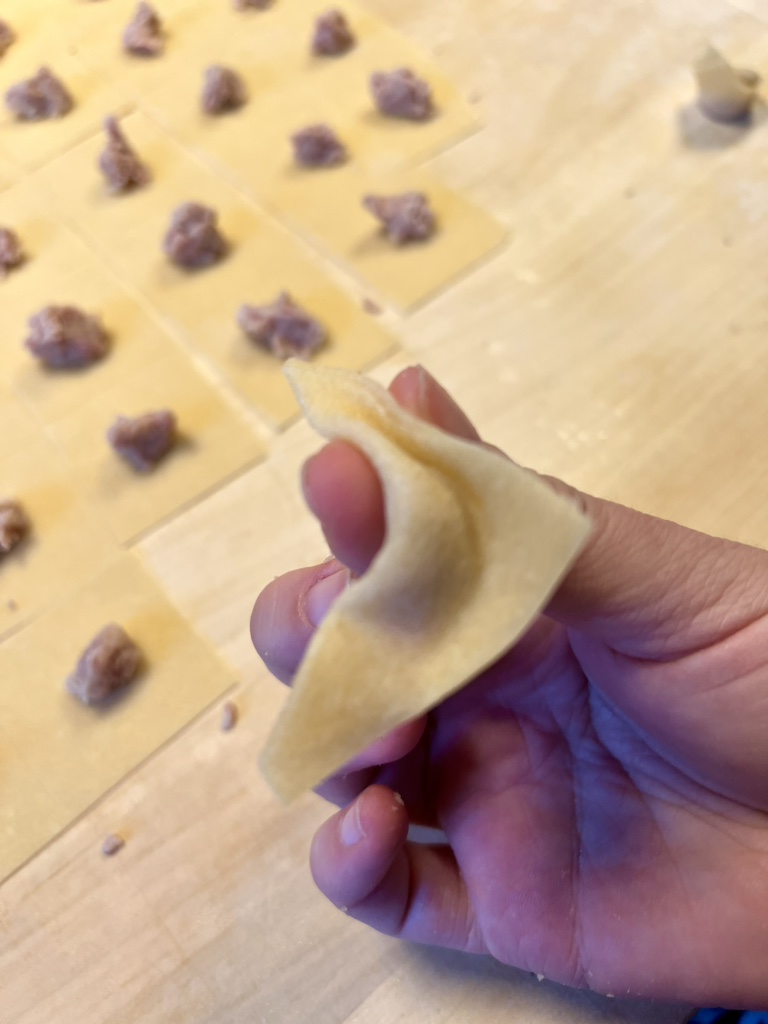
…and close the ring by pressing the tips firmly together.

With a little practice, it goes much faster than you would think. We also have a lot of fun doing it and the result is beautiful:

By the way, we do not throw away dough cuttings. Instead, we cut them into pieces of similar size, but without a specific shape. We spread them out so that they do not stick together and eat them as pasta “Maltagliati”.
For tortellini in brodo we heat part of the broth and cook our pasta directly in it. The filling of the tortellini and the broth should form a bond. To achieve this, put the tortellini in the boiling broth, put a lid on and take the pot off the heat. The fresh pasta now cooks in about three minutes without becoming too soft.

To be served in the broth. Just grate a little Parmigiano on top to taste.

The other variation, tortellini in fonduta di Parmigiano, are also quickly prepared: A small amount of broth is brought to a simmer in a pan. But be careful: only gently simmering, no rolling boil, otherwise the cheese will become stringy and clumpy!

To this is added grated Parmigiano, which is immediately stirred constantly with a whisk. The temperature must now be reduced to medium heat.

Now follows cream, always continuing to stir. Finally, season with freshly grated nutmeg. Additional salt should not be necessary, the Parmigiano is salty enough.

You can still pass the fonduta through a fine sieve, but for us it tastes great without this further step.
We toss tortellini pre-cooked in broth in this mixture until they are completely coated with the sauce.

When portioning, keep in mind that this version is a very substantial dish:

Finally, our tip for preserving fresh tortellini:
We always put so many tortellini in a bamboo steamer that they are still next to each other and not on top of each other. Then we bring water to a boil in a pot slightly smaller than the diameter of the bamboo steamer. We close the steamer, put it on the pot and let the tortellini steam for two minutes. Then we immediately let the tortellini cool completely on a baking tray. The tray takes the heat from them very quickly.
The steam partially cooks the filling, but most importantly, it forms a sealing layer on the surface of the pasta. After they have cooled, they no longer stick together and retain their shape. Thus, the tortellini can be frozen in portions and enjoyed even after many months.

Enjoy.
And may the taste be with you.
Ingredients (for about 1,000 tortellini – which is a lot):
For the dough:
1 kg flour (Italian Tipo 00)
10 medium to large eggs
Salt
For the filling:
25 g butter
3 – 4 sprigs of rosemary
300 g pork loin
300 g Parma ham
300 g Italian mortadella
450 g Parmigiano Reggiano
3 eggs
grated nutmeg or (recommended) a scant teaspoon of mace
Smaller portioning:
Tortellini is mostly a (substantial) appetizer. The ratio of dough to filling is about 1:1.
For a generous portion per person, divide the recipe by 15.
For many people, that would be enough for a main course. But not necessarily in Bologna.
To serve:
Variation “in brodo”:
Up to 200 ml of beef broth per person (or broth of beef and chicken)
Variation “fonduta di Parmigiano”:
For 4 people:
100 ml beef broth
100 g Parmigiano Reggiano
150 ml cream
Grated nutmeg to taste

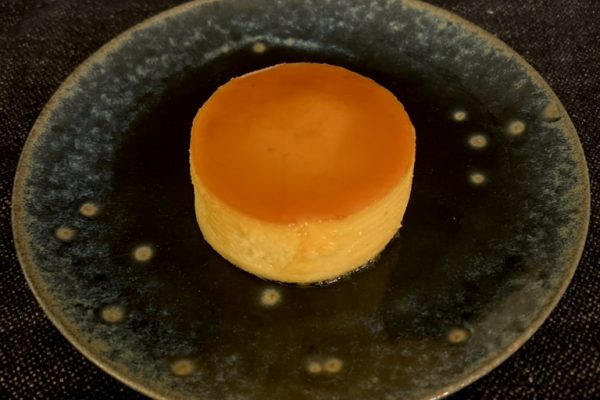
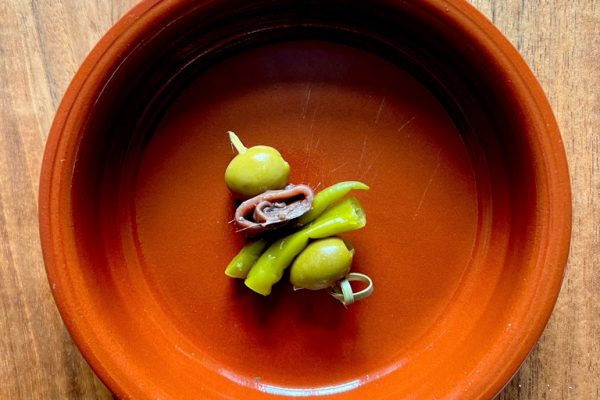
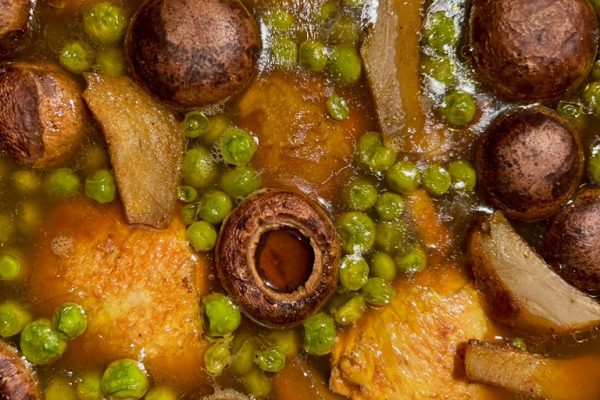
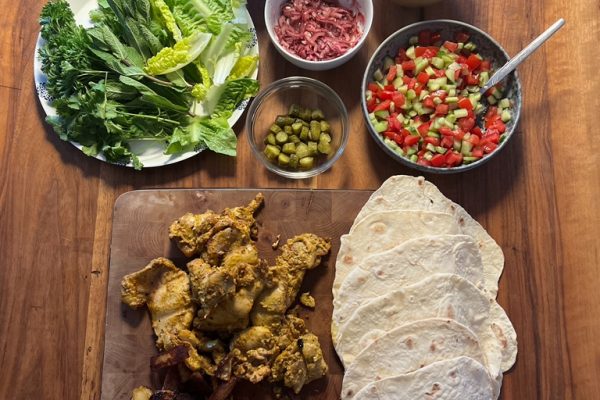
4 thoughts on “Tortellini”